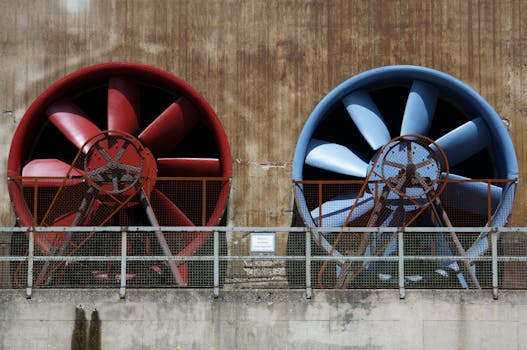Understanding the Importance of Proper Attic and Roof Ventilation
Proper ventilation of the attic and roof is a critical aspect of home maintenance that is often overlooked. Many homeowners may not realize that inadequate ventilation can lead to a host of problems, including structural damage, increased energy costs, and health issues. This article explores the significance of proper attic and roof ventilation, the consequences of neglecting it, and best practices for ensuring optimal airflow.
What is Attic and Roof Ventilation?
Attic and roof ventilation refers to the system of air circulation that allows fresh air to enter the attic space while expelling stale air. This process is essential for maintaining a balanced environment within the home. Proper ventilation typically involves a combination of intake vents, located at the eaves or soffits, and exhaust vents, situated at the ridge or high points of the roof.
Benefits of Proper Ventilation
There are several key benefits to ensuring that your attic and roof are properly ventilated:
- Temperature Regulation: Proper ventilation helps to regulate the temperature in the attic, preventing excessive heat buildup during the summer months.
- Moisture Control: Ventilation reduces humidity levels, which can prevent condensation and the growth of mold and mildew.
- Energy Efficiency: A well-ventilated attic can lower cooling costs in the summer and heating costs in the winter, leading to significant energy savings.
- Extended Roof Lifespan: By preventing heat and moisture buildup, proper ventilation can extend the life of roofing materials.
- Improved Indoor Air Quality: Adequate ventilation helps to reduce indoor air pollutants, contributing to a healthier living environment.
The Consequences of Poor Ventilation
Neglecting proper ventilation can lead to several serious issues:
- Heat Damage: Excessive heat can warp roofing materials and damage insulation, leading to costly repairs.
- Mold Growth: High humidity levels can create an environment conducive to mold growth, which poses health risks and can damage the structure of the home.
- Ice Dams: In colder climates, poor ventilation can lead to ice dams forming on the roof, which can cause water to back up and leak into the home.
- Increased Energy Bills: Without proper airflow, HVAC systems must work harder to maintain comfortable temperatures, resulting in higher energy costs.
Case Studies and Statistics
Research has shown that homes with proper attic ventilation can save homeowners up to 30% on energy costs. A study conducted by the U.S. Department of Energy found that homes with adequate ventilation experienced a 10-20% reduction in cooling costs during the summer months. Additionally, the National Association of Home Builders (NAHB) reports that homes with proper ventilation systems have a significantly lower incidence of mold-related issues.
Best Practices for Attic and Roof Ventilation
To ensure your attic and roof are properly ventilated, consider the following best practices:
- Install Intake and Exhaust Vents: Ensure a balanced system of intake and exhaust vents to promote effective airflow.
- Regular Inspections: Conduct regular inspections of your ventilation system to identify any blockages or damage.
- Use Ridge Vents: Ridge vents are an effective way to allow hot air to escape from the attic while drawing in cooler air from the eaves.
- Consider Soffit Vents: Soffit vents can enhance airflow by allowing fresh air to enter the attic space.
- Consult Professionals: If unsure about your ventilation needs, consult with a roofing or HVAC professional for tailored advice.
Conclusion
Proper ventilation of the attic and roof is essential for maintaining a healthy, energy-efficient home. By regulating temperature, controlling moisture, and improving indoor air quality, effective ventilation can prevent costly repairs and enhance the overall comfort of your living space. Homeowners should prioritize ventilation as a key component of home maintenance, ensuring that their homes remain safe, efficient, and comfortable for years to come. Remember, investing in proper ventilation today can save you significant costs and headaches in the future.
